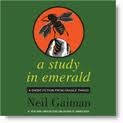"Samuel Beckett never gave much information about his Waiting for Godot, which premiered on January 5, 1953 in Paris," writes the Existential Absurdist in his/her blog titled Modern Literature: Is Samuel Beckett's Work Existential? "This has left many people wondering what the play meant, exactly." While the work has been labeled everything from avant-garde to just plain boring, the Existential Absurdist argues that the play is existential above anything else.
So what is existentialism? Philosophyparadise.com defines the term as: a philosophy that repudiates the idea of religion bringing meaning to life and advocating the idea that individuals are instrumental in creating meaning in their lives. In an article titled Samuel Beckett's Waiting for Godot, a site contributor writes "Waiting for Godot shows that the individual must take action instead of just sitting around waiting for a God that may or may not bring salvation."
In the film Clerks, main character Dante Hicks, a young retail clerk at a New Jersey Quick Stop convenience store is called into work on his day off. Dante's day is spent in the purgatory of serving a stream of customers while complaining relentlessly that he's "not even supposed to be here today." Dante passes time in wide-ranging conversations with his friend Randal, much in the way Vladimir and Estragon pass the time they spend waiting around in Waiting for Godot. Clerks supporting characters of Jay and Silent Bob also mirror Pozzo and Lucky from the play.
(Jay & Silent Bob)
(Pozzo & Lucky)
A part of existential thought includes the belief that a loss of identity causes mankind's helplessness. Blogger Existential Absurdist argues that this is why existentialists emphasize giving one's life a purpose. He/she writes, "[Existentialists] would argue that God has not given your life a purpose, and therefore it can mean nothing, unless you give it meaning yourself. Beckett's play serves as a warning to its readers: do not do as Vladimir and Estragon do. Beckett warns against wasting one's life by 'waiting' instead of 'doing'."
In Waiting for Godot, Estragon and Vladimir are called only by their nicknames: Gogo and Didi. The two do not seem to know who they are or even remember their pasts. In Clerks, Jay's friend is known only as Silent Bob and the pair are stoners, notorious for short-term memory loss, procrastination and lack of motivation.
In Clerks, Dante blames the day's misfortunes and problems on his friend Randal, whom he claims does nothing for him but make his life miserable by getting him fined, offending his customers, and ruing his relationship. Randal answers that Dante's actions are to blame. (wiki) This same situation of allowing oneself to be controlled can be seen in the way Lucky allows himself to be tied up and controlled by Pozzo in Waiting for Godot. Lucky lives without meaning or purpose because he allows himself to be controlled by another. Dante misses out and loses his girlfriend because he doesn't take responsibility for himself and his life.
Waiting for Godot has been called the "most important English-speaking play of the 20th Century". This may very well be true, but I can tell you it doesn't even rank in my top 20 as far as enjoyability. I'm a terrible person. Probably an even worse critic. Clerks made me laugh with its never ending sexual humour, but I felt a little dumber for having watched it. I will say that I agree in part with the philosophy of existentialism. I believe we are responsible for creating true meaning in our own lives. That doesn't mean that I don't believe God isn't rooting for us from on high or that we shouldn't seek to better understand His will and hopes for His people. I just think that if we wait for Divine intervention in our lives, we'll be waiting and waiting and waiting just like Vladimir and Estragon.
References:
Existential Absurdist. Modern Literature: Is Samuel Beckett's Work 'Waiting for Godot' Existential?. http://existentialabusurdist.blogspot.com/2010/01/is-samuel-becketts-work-waiting-for.html. 2010. web.
Samuel Beckett's Waiting for Godot. http://www.philosophyparadise.com/essays/waitingforgodot.html. web.
Clerks. http://en.wikipedia.org/wiki/Clerks. web.







